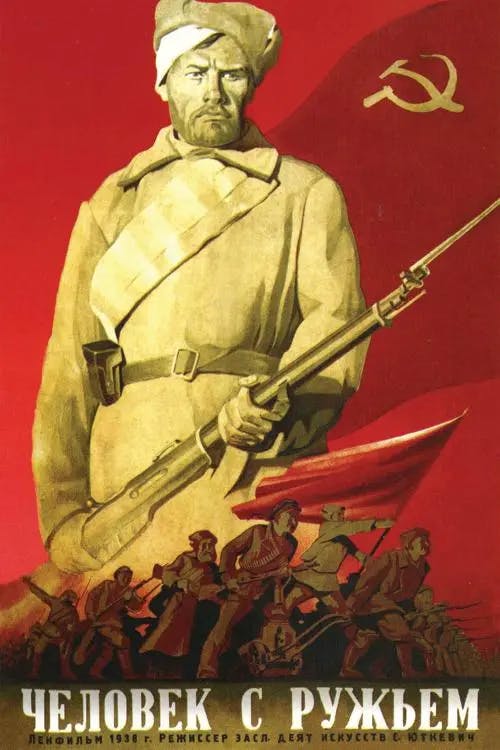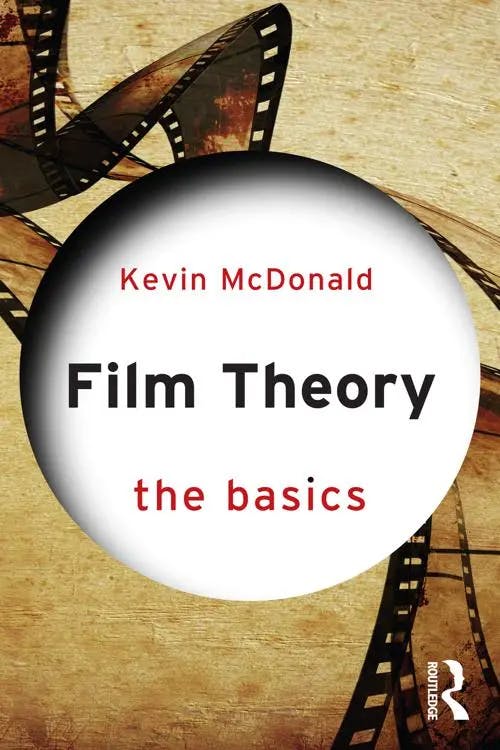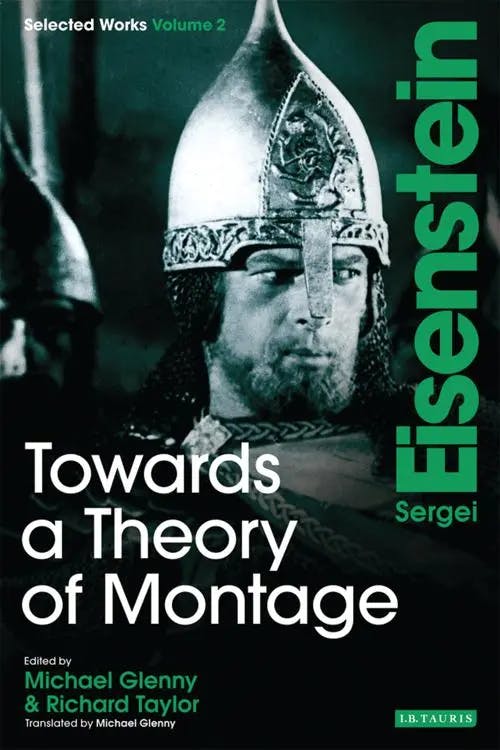What is Soviet Montage?
PhD, Media Arts (Royal Holloway, University of London)
Date Published: 20.07.2023,
Last Updated: 20.07.2023
Share this article
What is montage?
We are likely all aware to some extent of the filmic device of montage. The training sequence in Rocky (Avildsen, 1976) has practically become synonymous with it. Indeed, anytime we see a series of shots put to music that disrupts the narrative flow of a film - whether characters try on a series of outfits or traverse diverse landscapes on an epic journey - we understand what this means for the diegetic treatment of time and space. Montage can condense long periods of diegetic time into short vignettes, it can jump drastically in location, and yet we are not startled by its lack of continuity. In other words, the filmic language of montage speaks to us, and audiences are are presumed to be fluent in this language. But this cinematic language has been developed over time and these cinematic devices are the outcome of significant experimentation.
By definition, montage is not a particularly challenging concept. In simple terms, montage refers to the power of editing. It describes the practice of compiling images and pieces of footage and the new meanings and connections this practice can generate. But this process of creation is a complicated one. The proposition that filmic meaning did not come from the contents of the footage but rather the way a film was put together was highly innovative in its inception and worked against the many realist movements of film history. Montage focuses not on what the camera captures, but the technical elements, performances, and filmic form. It has received a wealth of scholarly attention, and hence has a rich and philosophical bank of theory and analysis behind it.
Defining Soviet montage
Montage was first created in Russia; a movement known as Soviet montage. Soviet montage marks a foundational moment in the development of cinema’s visual language, referring to both a theory and editing practice. As this guide will go on to describe, Soviet montage suggests that 1+1 = 3, which is to say that two shots spliced together produce more than the sum of their parts.
Montage was an early interest of the formalist school of thought that believed the power of cinema lay in its editing. It is associated with theorists and filmmakers like Lev Kuleshov, Vsevolod Pudovkin, Dziga Vertov and Sergei Eisenstein. These thinkers were working within a new cinematic production system put in place by Vladimir Lenin. The Bolshevik leader realized film’s potential to create a sense of unity in Soviet Russia, a place ravaged by civil war. In 1919, to consolidate the country, Lenin dissolved independent production companies and founded the first film school in Moscow where fresh talent would learn to use the medium of film in a way that would promote the Bolshevik political agenda. In The Eisenstein Reader, Richard Taylor references the ethos of these young filmmakers noting,
The October Revolution not only broke down the old social, economic and political order, it also overthrew the traditional notions of art and of the arts. The torch was passed to a new generation who took new revolutionary content for granted and were therefore primarily concerned to seek out new forms with which to express that revolutionary content: it was the primacy of this concern that was later to lay them open to the charge of 'Formalism', of being more interested in form rather than the revolutionary content that they took for granted. (2009)
Edited by Richard Taylor
The October Revolution not only broke down the old social, economic and political order, it also overthrew the traditional notions of art and of the arts. The torch was passed to a new generation who took new revolutionary content for granted and were therefore primarily concerned to seek out new forms with which to express that revolutionary content: it was the primacy of this concern that was later to lay them open to the charge of 'Formalism', of being more interested in form rather than the revolutionary content that they took for granted. (2009)
As this quote suggests, rather than producing mere propaganda, the work done at this nationalized film institution changed the trajectory of cinema. Jamie Miller explains in Soviet Cinema how the legacy of this work is less political than it is technically theoretical, observing,
Lecturers and professors were often appointed on the basis of their reputation in the cinema industry rather than their perceived political reliability… the cinematic administration was more concerned with these broader questions of structure, organization, planning and development rather than micromanaging the Institute. (2009)
Jamie Miller
Lecturers and professors were often appointed on the basis of their reputation in the cinema industry rather than their perceived political reliability… the cinematic administration was more concerned with these broader questions of structure, organization, planning and development rather than micromanaging the Institute. (2009)
One of the primary innovations that arose from these questions was Soviet montage, an early investigation into the way that images and cinematic moments, strung and layered together, created new meaning. Throughout the early 1920s, Soviet filmmakers experimented with editing to showcase how complex ideas could be extracted from the combinations of footage shown. This was a cinematic investigation that was highly theoretical and innovative at the time, wherein previously editing had been used to convey a sense of spatio-temporal continuity between shots. This development of Soviet montage, both as a theory and a practice, was a moment in cinema’s history that expanded the possibility and profundity of the filmic medium.
The Kuleshov Effect
Lev Kuleshov was one of the founders of the 1919 All Union State Institute of Cinematography and has since become a crucial theoretician of Soviet montage. Both a filmmaker and a teacher, Kuleshov shared the formalist concern for editing; the way that layered shots interact and juxtapose to create certain impacts. “The secret mastery over cinematic material”, Kuleshov wrote, “- the essence of cinematography – lies in its composition, the alternation of photographed pieces” (Kuleshov on Film, 1922 [2018])
The formalist’s task was to find a scientific way to understand more about film techniques and their effect. In looking at two pieces of footage, strung together, the formalists agreed there were three components at work: the first shot, the second shot, and then the connections and inferences we make as a result. This third component, although immaterial, was always present and of the utmost importance to the formalists.
Kuleshov crystalized this idea in a highly influential filmic experiment called “the Kuleshov effect”. He took a single shot of the expressionless face of Russian silent film actor, Ivan Mosjoukine, and showed it with three different reverse shots. The original footage of the experiment can be watched here:
As we can see, the single shot of Mosjoukine’s face changes with the introduction of new contexts and associations. When it was edited with the reverse shot of a bowl of soup, Kuleshov’s students agreed his expression was “hungry”. When put alongside a shot of a child in a coffin, the character appeared to be grief-stricken. And when the face was shown to be looking at a lounging woman, it appeared to be lustful and full of desire. This proved the formalist assertion that the way that shots are put together – the editing of film – can generate far more sophisticated meaning than a single shot or piece of footage can alone.
The Kuleshov effect demonstrated that meaning can be cultivated in the essential nothingness that exists between shots. Kuleshov’s students were amazed at the range of emotion and depth of feeling they were able to imprint on the blank face based purely on the shot it was placed alongside. Suddenly, a character is intensely hungry – maybe he has been a starved prisoner or perhaps the soup has awakened a memory previously lost to time. Similarly, when he looks at the woman, you feel he is being pulled to her, almost magnetically, and you begin to speculate on their relationship: is he an unwelcome voyeur or a secret lover? We begin to see how profound meaning can be inferred even though we know, just as the students did, that Mosjoukine’s face is completely unchanged. It is the same shot, but it takes on a myriad of effects. This experiment challenged the idea of intrinsic meaning in a single shot, suggesting instead that meaning was contingent on the shots around it. The magic of film, they concluded, was not in filming events and showing them to an audience, it was in the dialectical relationship between images.
Kuleshov conducted other experiments like this. For example, he would take the same three shots and put them in different orders to generate different meanings. Kuleshov also played with geography in his experiments, compiling footage taken in vastly different places to create a new, cohesive, and fictional world. This cinematic play proved how space and time could become malleable in the hands of the filmmaker and editor. As Kevin McDonald describes in Film Theory,
By editing the same initial shot together with several different reverse shots, the experiment suggested that an actor’s appearance is determined less by his facial expression than by what he is looking at. Kuleshov’s investigations quickly became the foundation for an ensuing generation of Soviet filmmakers, and editing became the primary means by which they sought to advance the new medium. (2016)
Kevin McDonald
By editing the same initial shot together with several different reverse shots, the experiment suggested that an actor’s appearance is determined less by his facial expression than by what he is looking at. Kuleshov’s investigations quickly became the foundation for an ensuing generation of Soviet filmmakers, and editing became the primary means by which they sought to advance the new medium. (2016)
This was the power of montage, a huge development in the understanding of film’s potential. The techniques that Kuleshov experimented with have since become commonplace practices, imperative to the way we read, enjoy and understand films.
Sergei Eisenstein
One of Kuleshov’s students was Sergei Eisenstein, a filmmaker and theorist who is perhaps most commonly associated with Soviet montage, particularly with his film Battleship Potemkin (Eistenstein, 1925). Building on Kuleshov’s findings, Eisenstein extended the idea of montage to further intellectual reaches. As a committed communist, Eisenstein drew parallels between a Marxist dialecticism and montage. Based on the work of Friedrich Hegel, Marx developed dialectical materialism, which describes a historical development based on material struggles. Dialectics refer to this negotiation of opposing forces - a proposition meets a counter proposition, a thesis meets an antithesis – and in that negotiation they form a relationship; a new proposition or thesis. This was how, according to Marx, intellectual and societal progress occurred.
Eisenstein considered montage to be a Marxist dialectic of sorts. Each shot would come into contact with another shot through the power of editing, and this would create a conflict from which a new understanding arose. This synthesis of contradictions drives the action of the film, generating meaning. Supporting the findings of Kuleshov, this relocated the power of cinema from the shot itself, to the way shots were put together. Both Soviet montage theorists proposed that the way film was constructed was perhaps more important than its individual constituents. As McDonald notes in Film Theory,
“In this regard, editing promised to serve in a dialectical manner. It was tantamount to smashing film's basic material units—the individual shot…” (2016).
Eisenstein found there were five methods of montage: metric, rhythmic, tonal, overtonal and intellectual. Going from most basic to most complex, these denote the different ways that footage can be put together, and the different effects that can be garnered from each. Eisenstein was most concerned with intellectual montage. Whereas other methods of montage were designed to make the viewers feel something – cutting to create a certain tempo or different tones to manipulate the way we feel - intellectual montage appeals to our ability to connect complex ideas. Two conflicting shots combined to create a visual metaphor from which we infer new meaning, a synthesis between the disconnects.
Example of Soviet montage in Battleship Potemkin
Eisenstein’s masterpiece, Battleship Potemkin (1925), is a key example that exhibits many of these different methods of montage. It was certainly a propaganda film, but that did not prevent it from acquiring international success at the time of its release. Potemkin follows the crew of a battleship as they revolt against the cruel tyranny of the ship’s officials. Set during the Russian revolution, the film is a clear allegory for the larger socialist rise against the Tzars. This made Eisenstein’s use of montage particularly politically manipulative in its power to make viewers feel through editing techniques.
One of the most famous extracts of Battleship Potemkin is known as “the Odessa steps sequence” which has become the prime illustration of Soviet montage. The sequence can be watched here:
In this chapter of the film, citizens converge at the Odessa steps to witness and support the rebels aboard the ship. Suddenly the celebrations are broken up as the innocent civilians are brutally driven down the steps by a group of soldiers, who shoot at and trample the crowd. This unbelievable cruelty from the authorities is heightened by the editing of the sequence. We see the quick cuts between shots establishing a frantic and chaotic pace, exemplifying metric montage. We also see tonal montage at work in the juxtaposition between the baby, stirring peacefully in its cushioned pram, cut quickly with the moving wheels and then the pram precariously bouncing down the steps, gaining speed. These conflicting tones serve to highlight the helplessness of the baby and the danger of the action taking place. This is an example of the dialectical conflict and synthesis that Eisenstein was so committed to.
An example of intellectual montage can be found at the end of the Odessa steps sequence:
We can see here how visual comparisons are made between the industrial aesthetic of the ship’s cannon and the intricate sculptural work on the Odessa Opera House. This contrast forces us as viewers to consider what each might represent: the guns might suggest the advancements of modernity and the revolutionary spirit while the sculptures gesture to an old and elitist way of life. Further examples of this method of montage can be observed in the sequence of shots that come after the destruction of the Opera House gates. Three quick images of stone lions follow – an editing choice that feels disjointed. Because the lions are shown in direct opposition to the destruction of the highbrow cultural institution, we might recognize it as the moment that the proletariat rises. It was in this way that Eisenstein highlighted the intellectual labor that film editing could produce, creating complex ideas through contrasting shots.
The work of both Kuleshov and Eisenstein demonstrated the metaphysical aspect of cinema; much of cinematic meaning originated in the mind of the viewer – not just in front of the camera. This was the significant contribution of Soviet montage to the development of filmic understanding.
The Legacy of Montage
In the late 1930s, Eisenstein wrote,
There was a period in our cinema when montage was proclaimed as being 'everything'. We are now coming to the end of a period when montage has been regarded as 'nothing'. Since we consider montage to be neither 'nothing' nor 'everything', we now think it necessary to recall that montage is as essential a component of film-making as all the other affective elements of cinematography (1938, [2010]).
Edited by Michael Glenny & Richard Taylor
There was a period in our cinema when montage was proclaimed as being 'everything'. We are now coming to the end of a period when montage has been regarded as 'nothing'. Since we consider montage to be neither 'nothing' nor 'everything', we now think it necessary to recall that montage is as essential a component of film-making as all the other affective elements of cinematography (1938, [2010]).
This illustrates the way in which montage has become integrated into the language of cinema in the same way that the camera work and the individual shot is an integral part of filmmaking. Montage works in conjunction with these other technical elements to create profound cinematic meaning.
Soviet montage ushered in a new potential for film, one that was born from theoretical and practical experimentation with editing. Much of historical and contemporary cinema opts for continuity editing, an approach that conceals the filmmaking techniques in order to immerse the viewer in the on-screen action. Because of the innovations of Soviet montage, however, we are now equally accustomed to an arguably more advanced approach to filmmaking that juxtaposes shots in order to transcend a naturalist sense of time and space. We now commonly understand montage as a method of representing the passage of time, disrupting the narrative flow, naturalist space, and passage of time.
So prolific is this use of montage, that many instances of satire and pastiche can be observed. For example, The Naked Gun (1988) pokes fun at the way that montage jumps in time and space, compiling absurd and exaggerated activities:
More specific still, Naked Gun 33 1/3 (1994) makes direct reference to Potemkin’s Odessa stair sequence, showing multiple prams rolling down a staircase at once:
Modern use of montage usually takes the form of the first The Naked Gun example, but remnants of the original project of Soviet montage can still be found. Moonage Daydream (Morgen, 2022), the newest documentary about the life of David Bowie, is made up of a series of clips and abstract animations. Rather than creating continuity between shots and images and a cohesive narrative, Moonage Daydream puts conflicting shots together to exhibit a collage of Bowie’s life. This creates a similar effect to the Odessa stair sequence that provokes audiences to make connections and infer meaning from disjointed images. The following clip provides an example of the documentary’s montage style:
Eisenstein’s stair sequence has many cinematic descendants like this. This is proof of how integral the developments of Soviet montage are to modern cinema. Film has become so comfortable with the technique of montage that is now a tendency to be satirical and self-referential. This goes to show that Eisenstein’s 1938 assertion that montage is an ‘essential… component of film-making’ is still true all these decades later.
Further Soviet montage reading on Perlego
Masters of the Soviet Cinema by Herbert Marshall
Form and Meaning in Avant-Garde Collage and Montage by Magda Dragu
Sergei Eisenstein by Mike O’Mahony
Eisenstein on the Audiovisual by Robert Robertson
Philosophy through Film by Amy Karofsky & Mary M. Litch
What is Soviet montage in simple terms?
What are some key characteristics of Soviet montage?
What are the different types of montage according to Eisenstein?
What is the Kuleshov effect?
What are some examples of Soviet montage cinema?
Bibliography
Eisenstein, S. (2010) Towards a Theory of Montage. Bloomsbury Publishing. Available at: https://www.perlego.com/book/883473/towards-a-theory-of-montage-sergei-eisenstein-selected-works-volume-2-pdf
Kuleshov, L. (2018). Kuleshov on Film: Writings of Lev Kuleshov. University of California Press. Available at: https://www.google.co.uk/books/edition/Kuleshov_on_Film/N7nADwAAQBAJ?hl=en&gbpv=1&dq=Kuleshov+on+Film:+Writings+of+Lev+Kuleshov.&printsec=frontcover
McDonald, K. (2016) Film Theory: The Basics. Taylor and Francis. Available at: https://www.perlego.com/book/1559625/film-theory-the-basics-pdf
Miller, J. (2009) Soviet Cinema. Bloomsbury Publishing. Available at: https://www.perlego.com/book/883697/soviet-cinema-politics-and-persuasion-under-stalin-pdf
Taylor, R. (2019). ‘Eisenstein: A Soviet Artist’ in Eisenstein, S. The Eisenstein Reader. Bloomsbury Publishing. Available at: https://www.perlego.com/book/1811711/the-eisenstein-reader-pdf
PhD, Media Arts (Royal Holloway, University of London)
Aoiffe Walsh has a PhD in Media Arts from Royal Holloway, University of London. With a background in film studies and philosophy, her current research explores British literary modernism, with a particular focus on surrealism between the wars. She has lectured and published pieces on documentary and film theory, film history, genre studies and the avant-garde.




